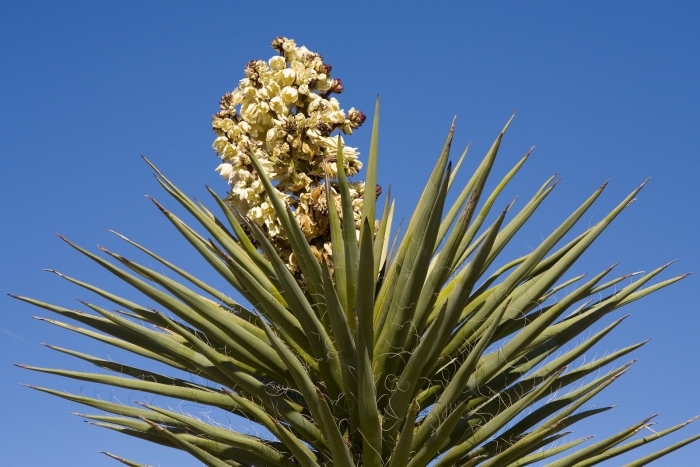Don Quixote’s Lace
(Yucca treculeana)
Don Quixote’s Lace (Yucca treculeana)
/
/

Patrick Alexander
CC0





















































Estimated Native Range
Summary
Don Quixote’s Lace is valued for its striking architectural form and its ability to thrive in hot, dry climates, making it a popular choice for xeriscaping and as a focal point in rock gardens. It is also used for erosion control due to its extensive root system. This plant is low-maintenance, requiring minimal water once established, and it prefers well-drained soils. It is tolerant of full sun and high temperatures. Gardeners should be cautious as the sharp leaves can be a hazard. There are no major disease problems, but it can be susceptible to root rot if overwatered.CC BY-SA 4.0
Plant Description
- Plant Type: Shrub, Tree, Succulent
- Height: 6-15 feet
- Width: 3-4 feet
- Growth Rate: Slow
- Flower Color: White
- Flowering Season: Spring, Summer
- Leaf Retention: Evergreen
Growth Requirements
- Sun: Full Sun
- Water: Very Low, Low
- Drainage: Fast
Common Uses
Bee Garden, Bird Garden, Butterfly Garden, Deer Resistant, Drought Tolerant, Fire Resistant, Fragrant, Hummingbird Garden, Low Maintenance, Rabbit Resistant, Rock Garden, Showy Flowers, Street Planting
Natural Habitat
native to arid regions, rocky slopes, and grasslands of the Southwestern United States and Northern Mexico
Other Names
Common Names: Texas-Bayonet , Trecul’s Yucca , Spanish-Bayonet , Spanish-Dagger , Bajonett-Palmlilie , Palma Loca , Palma Pita , Spanish Dagger
Scientific Names: Yucca treculeana , Yucca australis , Yucca canaliculata , Yucca treculeana var. succulenta , Yucca treculeana var. canaliculata , Yucca spinosa , Yucca recurvata , Sarcoyucca treculeana , Yucca agavoides , Yucca argospatha
GBIF Accepted Name: Yucca treculeana Carrière